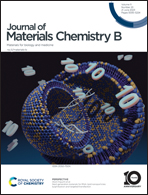Application of nanotechnology in thrombus therapy
Abstract
The diseases caused by two pathological processes, thrombosis, and thromboembolism, are clinically known as thrombotic diseases, which seriously threaten human life and health, and their incidence rate is the highest among various diseases. Research on thrombotic diseases is one of the focuses and hotspots of contemporary medical research. Nanomedicine is a new branch of nanotechnology used in the medical field, and nanomaterials are widely used in medical imaging and drug delivery to help diagnose and treat major diseases such as cancer. With the gradual maturity of nanotechnology, new nanomaterials have recently been used in antithrombotic drugs and released accurately at lesions, which has improved antithrombotic therapy safety. Nanosystems can be employed for cardiovascular diagnosis in future as they can aid in diagnosing pathological diseases and treat them with targeted delivery systems. Unlike other reviews, we herein aim to illustrate the progress of nanosystems in thrombosis therapy. This paper mainly describes how a drug-loaded nanosystem can control drug release under various conditions and accurately treat thrombus, summarizing the research progress of nanotechnology in antithrombotic therapy so that clinicians can better understand nanotechnology and its applications and provide new ideas for treating thrombosis.

- This article is part of the themed collection: Journal of Materials Chemistry B Recent Review Articles


 Please wait while we load your content...
Please wait while we load your content...